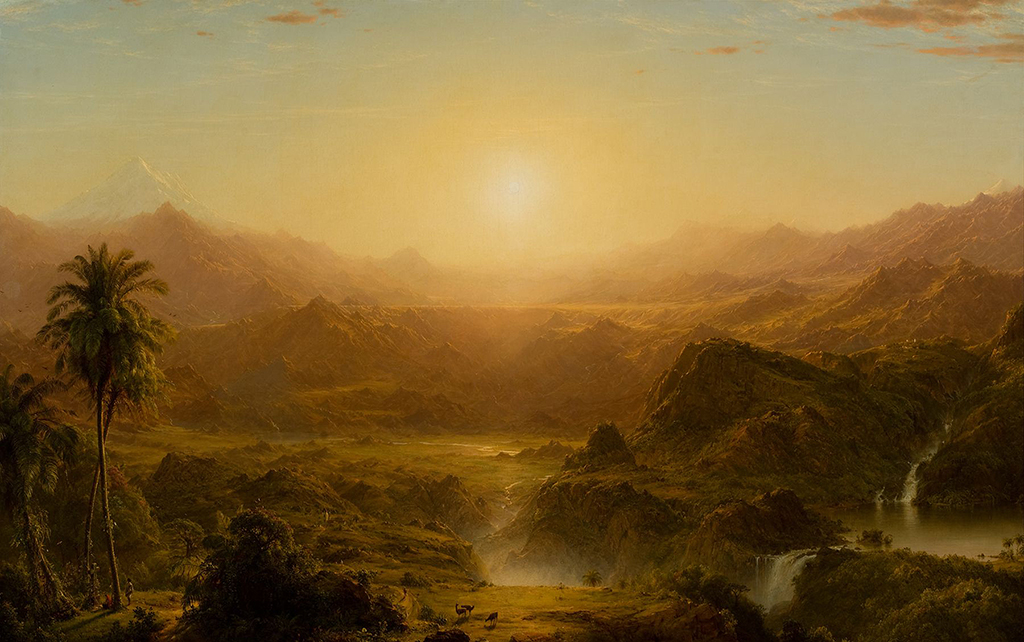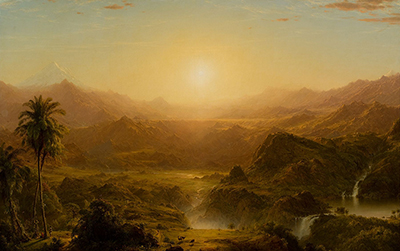If you're in the slightest bit familiar with Frederic Edwin Church's profile which has him famed for painting beautiful, large landscapes then it wouldn’t have taken you too long to correctly attribute The Andes of Ecuador to one of the biggest names adding to the long-standing prestige of the Hudson River School.
Completed in 1855, The Andes of Ecuador is essentially a premier painter’s recreation of some visual inspiration which is often the preserve of a traveler. In this particular instance the landscape is one which Church came into contact with on his trip to South America, which speaks volumes of his mastery of the craft because the trip itself was in 1853, with re-visit to come again in 1857. In between those visits was the painting's completion. This is largely viewed to have been his very first prominent painting, perhaps rightfully referred to as his biggest work to date. The Reynolds House Museum of American Art, which is where the painting is held in Winston-Salem, North Carolina, refers to The Andes of Ecuador as "an early Luminism masterpiece." It’s very hard to argue with that declaration.
True to what would have likely been the natural medium-influence of Thomas Cole, who was Church’s teacher, The Andes of Ecuador was painted using oil on canvas. The influence appears to run a little deeper than that though, but with a distinctly Church-twist which is what probably made him stand out as the premier American landscape painter of that period. With this particular piece, it’s pretty clear that Church spared some detail, something which to a certain degree goes against his teacher Cole’s preference for a sublime and general effect achieved through limiting details. In The Andes of Ecuador, Church uses the sun’s prominent light to account for that overall effect touted by Cole, but the sunlight in turn reveals in great detail the various elements of the beautiful landscape which come together to make up a piece which could be said to be greater than the sum of its parts, but at the same time if you were to focus your keen eye on one segment of the painting it would probably be nothing short of complete.
The sunlight illuminates the entire image, distinguishing the faint mountains in the backdrop through shadows that give way to the emergence of greater detail as the eye draws closer (out) to the landscape elements in the foreground. Grazing lamas make for quite the pleasant surprise to the eye as one tends to first absorb the image as its composite whole. The duo of figures gathered at the stone cross nearby a collection of palm trees add another dimension to the hidden beauty of the painting, while the golden rays of the sun hitting the plateau form a large cross that may take a while to see.





